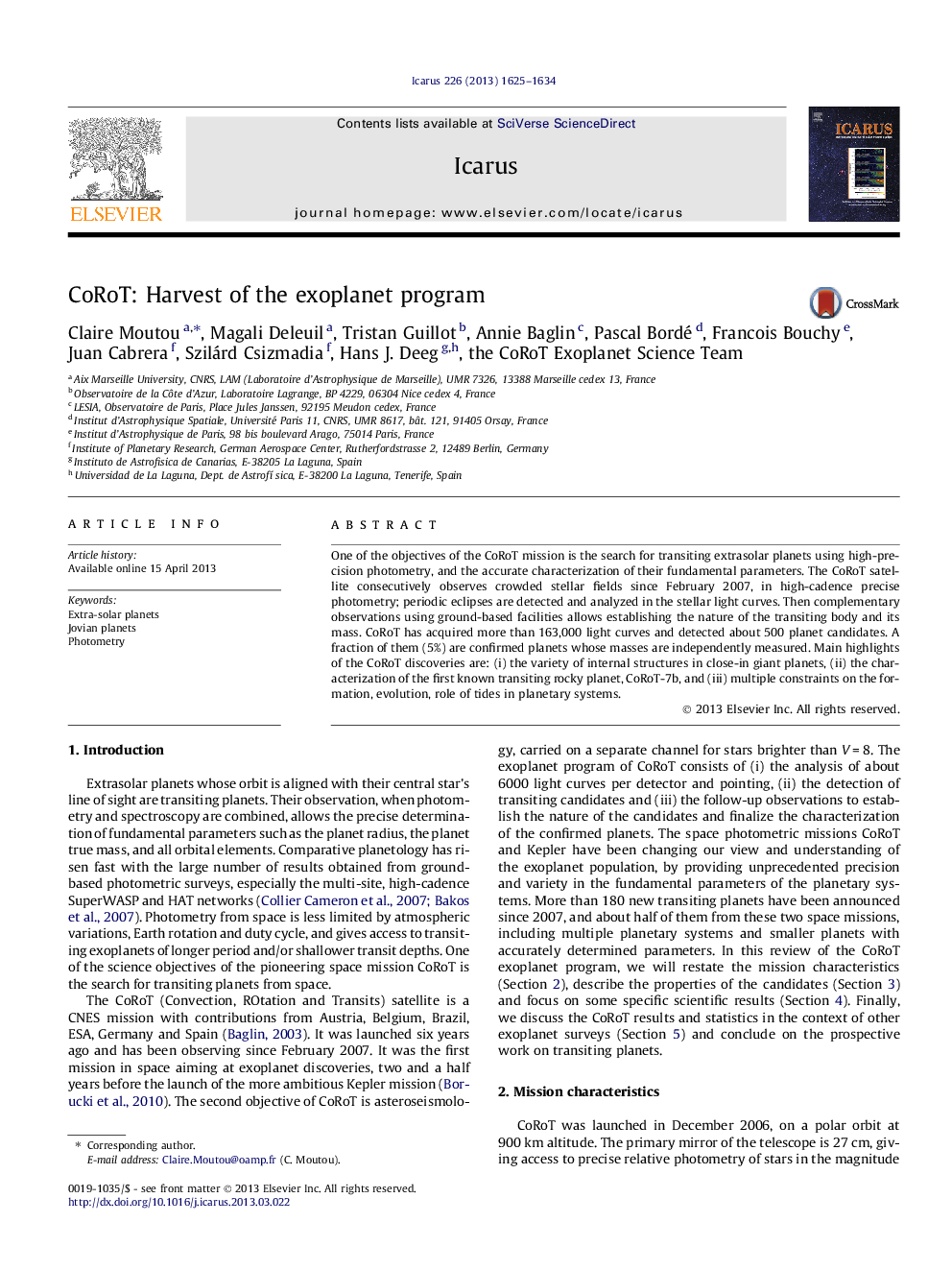| Article ID | Journal | Published Year | Pages | File Type |
|---|---|---|---|---|
| 10701406 | Icarus | 2013 | 10 Pages |
Abstract
One of the objectives of the CoRoT mission is the search for transiting extrasolar planets using high-precision photometry, and the accurate characterization of their fundamental parameters. The CoRoT satellite consecutively observes crowded stellar fields since February 2007, in high-cadence precise photometry; periodic eclipses are detected and analyzed in the stellar light curves. Then complementary observations using ground-based facilities allows establishing the nature of the transiting body and its mass. CoRoT has acquired more than 163,000 light curves and detected about 500 planet candidates. A fraction of them (5%) are confirmed planets whose masses are independently measured. Main highlights of the CoRoT discoveries are: (i) the variety of internal structures in close-in giant planets, (ii) the characterization of the first known transiting rocky planet, CoRoT-7b, and (iii) multiple constraints on the formation, evolution, role of tides in planetary systems.
Related Topics
Physical Sciences and Engineering
Earth and Planetary Sciences
Space and Planetary Science
Authors
Claire Moutou, Magali Deleuil, Tristan Guillot, Annie Baglin, Pascal Bordé, Francois Bouchy, Juan Cabrera, Szilárd Csizmadia, Hans J. Deeg, the CoRoT Exoplanet Science Team the CoRoT Exoplanet Science Team,
